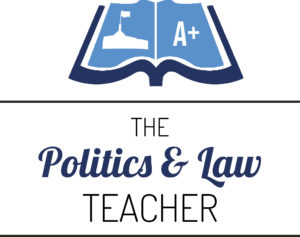Federal Election 2022
Year 11 Unit 2
- advantages and disadvantages of the electoral and voting systems in Australia with reference to at least one recent (the last ten years) election
- ways individuals, political parties and pressure groups can participate in the electoral processes in Australia
The 2022 federal election was a general election that chose a new House of Representatives and just over half the Senate. Electors used the well-established preferential and proportional electoral systems to choose the 47th Parliament. Compulsory voting ensured very high elector participation compared to other liberal democracies with which Australia is frequently compared.
This post refers only to the House of Representatives and the preferential voting system used to elect it.
Compulsory voting – advantages
Australia is one of only 21 counties that have compulsory voting. It has several advantages as follows:
A very high participation rate
Compulsory voting encourages high participation through positive and negative incentives. Since its introduction in 1924, it has been an established part of Australia’s political culture. It has helped entrench voting as a civic duty that is broadly accepted by the population. Voter registration is made as easy as possible by the Australian Electoral Commission using data from other government databases to identify and invite citizens to enrol to vote as soon as they become eligible. A modest fine provides a mild negative incentive to vote.
Rewarding centrist ideologies and discouraging extremism
In many liberal democracies, including Australia, a contemporary issue is the rise of extreme political ideologies, especially on the right. Extreme ideologies are a reaction to deteriorating economic conditions, globalisation, culture wars over identity and other factors. They gave rise to the Trump phenomenon in the USA and Brexit in the UK.
Australia is not immune to right-wing extremism, as evidenced by the populism of the United Australia Party (UAP) and Pauline Hanson’s OneNation (PHON). Both UAP and PHON branded themselves as “freedom” parties in reaction to the strict COVID-19 mandates and lockdowns of the last two years. The re-branding was an attempt to harvest the votes of disaffected electors.
Compulsory voting overwhelms the influence of small extremist parties and candidates by encouraging the participation of mainstream citizens in large numbers. Despite enormous spending on advertising and running candidates in every electorate, UAP failed to win a single seat in the House of Representatives. It lost its only lower house seat when its parliamentary leader, Craig Kelly – who defected from the Liberal Party during the last parliament – failed in his bid for re-election to the seat of Hughes. PHON ran candidates in 149 of the 151 lower house electorates and failed to win a single seat.
Meanwhile, the Liberal Party lost six seats in its traditional heartland after it arguably drifted too far to the right by selecting a controversial anti-transgender rights candidate in NSW. Katherine Deves elevated transgender issues to prominence during the election campaign, failed to win in Warringah and was likely a factor in the loss of six other moderate Liberal electorates in NSW, Victoria and WA.
The Greens moderated their approach too. In the 2019 election, they campaigned heavily against coal mining in Queensland. Their anti-coal convoy to the mining state contributed to the re-election of the Morrison Government by undermining the Labor. It was a costly error. In 2022, they adopted a different grassroots engagement strategy with electors in Brisbane. Instead of radical left-wing environmentalism, the Greens just asked people about their issues of concern. They won three seats in Brisbane by moderating their message and approach.
Strengthening the government’s mandate
Despite Labor only gaining 32% of the primary vote, compulsory voting combined with the preferential system meant that Labor emerged with nearly 53% of the national two-party-preferred vote.
Compulsory voting means that over half of 17 million electors preferred Labor – a strong endorsement of the Albanese Government despite its low primary vote. If voting were voluntary, the mandate would be weaker.
Robust mandates are essential for a government that wants to implement its plan.
Compulsory voting – disadvantages
Conflicts with freedom of choice
Forcing people to vote is sometimes argued to be an infringement of freedom of choice. However, people need only attend a polling booth or lodge a postal or early vote to comply with electoral law. They are not compelled to choose candidates because they can leave the ballot paper blank or spoil their ballot.
Impact of poor quality votes
A more serious disadvantage is the effect of counting uninformed electors’ votes. Donkey votes and random votes are indistinguishable from genuine votes and are counted. In very close contests, these poor quality votes can be decisive. For example, the seats of Gilmore and Deakin were decided by less than 400 and 500 votes, respectively – and the Albanese Government formed with a two-seat majority. A few votes can be crucial in close contests and where a razor-thin majority results in forming a government.
Preferential voting – advantages
Reduced vote wastage
As an electoral system based on single-member constituencies, preferential voting favours a two-party system. However, the 2022 election demonstrates its capacity to make votes for non-major parties count.
Despite only receiving 32% of the primary vote, Labor achieved nearly 52% of the two-party preferred vote. The distribution of preferences from eliminated candidates delivered this result. This process demonstrates how votes for unsuccessful candidates are not always wasted because they can go to elect a preferred candidate. In this instance, vote wastage was limited to 48%.
Had the election used the first past the post voting system, the Coalition may have won most seats and formed a government with 36% of the vote. However, that would also mean that 64% of electors would have wasted their votes. They would also prefer to be represented by non-Coalition MPs.
Stable government
By converting a 32% primary vote into a 52% two-party preferred vote, preferential voting enabled Labor to win 77 of the 151 – or 51% – of the seats in the House of Representatives – the house government. Therefore, the incoming Albanese Government is a majority government able to command the lower house.
There is a myth that majority governments are necessary for stability. Evidence from Australia and overseas points to the success of minority governments. The Gillard Government (2010-2013) was a minority government yet produced more legislation and significant reform (like the NDIS) that any government in recent history. New Zealand and many European governments are more often than not minority governments. Conversely, recent Australian majority governments from 2013 onwards have been characterised by instability in terms of short-term Prime Ministers and policy inertia.
Nevertheless, there is little doubt that majority governments have an easier time in the lower house because they can guarantee confidence, supply and legislative votes.
Allows a pathway to victory for minor parties and independents
Preferential voting provides opportunities for non-major party candidates to win individual electorates if they can:
- Limit the Liberal or Labor vote to less than 45% of the primary vote; and
- Finish second in the two-candidate preferred count; and
- Benefit from the flow preferences from eliminated candidates sufficient to make up an absolute majority of votes.
Point 3 above indicates the importance of pre-election preference deals between parties. Preferential voting makes such deals vital in close contests where no candidate wins an absolute majority of primary voters.
The pathway outlined above is how the six teal independents in NSW, VIC and WA and the three Greens candidates in Brisbane got elected. In seats where teal independents defeated sitting Liberals, Labor ran candidates without any support, knowing they had no chance of winning (a strategy known as “running dead”). Labor’s purpose was to use their how to vote cards to direct voters to give the teal independent their second preference. The Greens did the same.
Preferential voting – disadvantages
Lack of fairness and representation
All single-member electoral systems are “winner take all” because there can only be one winner per electorate. Conversely – and unfairly, it also means that minor parties and independents who cannot achieve the “pathway to victory” described above will not be elected.
In the 2022 election, Labor and the Liberal/National Coalition received 68% of the vote. Their combined vote translated into 89.5% of the seats in the House of Representatives. All the rest – minor parties & independents – combined received 31% of the primary vote and only won 10.6% of the seats. Of the minor parties and independents, PHON, UAP and others won no seats.
By collapsing the votes of diverse eliminated parties and candidates, preferential voting reduces and distorts the representativeness of the House of Representatives.
Winner’s bonus
The Labor Party won only 32% of the primary vote – its lowest since the 1930s – and yet could form a majority government with 51% of the seats. It can do so because preferential voting – like all single-member systems – amplified the Labor vote by eliminating candidates in many seats.
The winner’s bonus enables stable majority governments to form – an advantage described above. However, it comes at the significant cost of reduced and distorted representativeness.
Reduced accountability
Westminster systems assign the lower house the role of holding the government responsible and accountable. The House of Representatives uses parliamentary procedures, like votes of censure and no-confidence, to discipline ministers. It also scrutinises government money bills and government legislation. However, an electoral system that gives the governing party outright control of the house will undermine the parliament’s capacity to perform its role of holding ministers – individually and collectively – to account.

